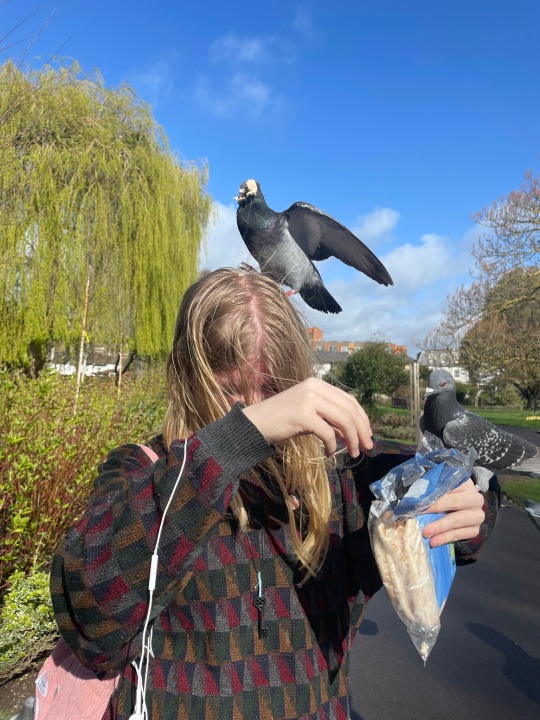Text
every time I see some bigshot scientist revealed as a fraud my knee-jerk reaction is "hell yeah elisabeth bik got 'em good" AND IM RIGHT

SHE NEVER QUITS!!!!


ICONIC!!!!
72K notes
·
View notes
Text
In a new study published in Nature Chemistry, UNC-Chapel Hill researcher Ronit Freeman and her colleagues describe the steps they took to manipulate DNA and proteins—essential building blocks of life—to create cells that look and act like cells from the body. This accomplishment, a first in the field, has implications for efforts in regenerative medicine, drug delivery systems, and diagnostic tools. "With this discovery, we can think of engineering fabrics or tissues that can be sensitive to changes in their environment and behave in dynamic ways," says Freeman, whose lab is in the Applied Physical Sciences Department of the UNC College of Arts and Sciences.
Continue Reading.
131 notes
·
View notes
Text

Red admiral butterfly
Scientific Name: Vanessa Atalanta
A very common species in the UK that is often seen in gardens. They have a wing span of 4.5-7.6cm and a life span of 10 months though this is usually shorter in the UK because they can’t survive the winter. Most migrate to the UK from North Africa and continental Europe, arriving in spring to lay their eggs. The name “red admiral” apparently comes from the corruption of the original 18th-century name “red admirable”.
2 notes
·
View notes
Text



Slow worm
Scientific name:Anguis fragilis
NOT A SNAKE! Or a worm. Slow worms are legless lizards because unlike snakes they have eyelids and can shed their tails if threatened. They can be found through mainland Britain they are most commonly found in wales and the south-west England although they are not fond in Britain. They can grow up to 50cm and have a diet of slugs, snails, spiders, insects and earthworms.
9 notes
·
View notes
Text



Ladybug larva
This week me and my friend found a weird looking bug which actually turned out to be a Ladybug in the larva stage of its lifecycle. In a typical ladybug lifecycle after 3-10 days a ladybug will hatch from an egg into its ladybug form in which it will stay for about a month before it enters its pupal stage , wich is a bit like the chrysalis faze in a butterfly life cycle, which lasts about 15 days. After this the ladybug emerges as a fully formed lady bug. The main reason for the larva is for beetle to eat a lot, a single larva can consume up to 350 to 400 aphids. This is why so gardeners actually use ladybug larva as a treatment when they have an aphid infestation.
#a bugs life#bugs#beetle#ladybug#cute#entomology#wildlife#cool wildlife#thanks Greg for holding the larva while I took this photo
4 notes
·
View notes
Text



Pigeons
Another very common species of the UK this post the humble pigeon. The one I shown in the picture above I believe are feral pigeons, one of the five species of pigeon and doves that live in the uk. They are often very friendly animals and long as you have bread or seeds to bribe them with
Hight: 20-30cm
Weight: 250-350g
Eggs: 2 per nest
Speed: 150 Km/h
Fun fact: some pigeons where so useful as messengers for the English and the French in WW1 they we decorated with military honours like the Dickin medal
#pigeon#birds nature#cute birds#wildlife#nicola tesla#say thanks to my friend Mary who posed for this epic photo#cute#birds work for the bourgeoisie
39 notes
·
View notes
Text



Ducks
This spring I was lucky enough to spot ducklings and their mother on my way home from school. The most common type of duck in the uk is the Mallard duck and are most recognisable from the males shiny green hood and yellow bill. Mallard ducks can be found in almost any body of fresh water in the UK and breed in the Summer and winter. Ducklings can be up and walking within a day of hatching but take 50-60 days to fledge (fly) and become independent. They are also incredibly cute and fluffy.
Scientific name: Anas platyrhynchos
5 notes
·
View notes
Photo

Dandelion
For my first post about wild life why not start with something I find in my own front “wild flower” garden the mighty Dandelion
It is common knowledge this little yellow flower can be rather dominating as you can see above and many regard it as a weed. Not me though, I regard it as quite pretty
scientific name: Taraxacum officinale
found: literally anywhere in the uk
Fun fact: 'Dandelion', their common name, has been derived from the French phrase 'dents de lion', which means lion tooth referring to the pointy tooth like shape of it’s leaves
6 notes
·
View notes